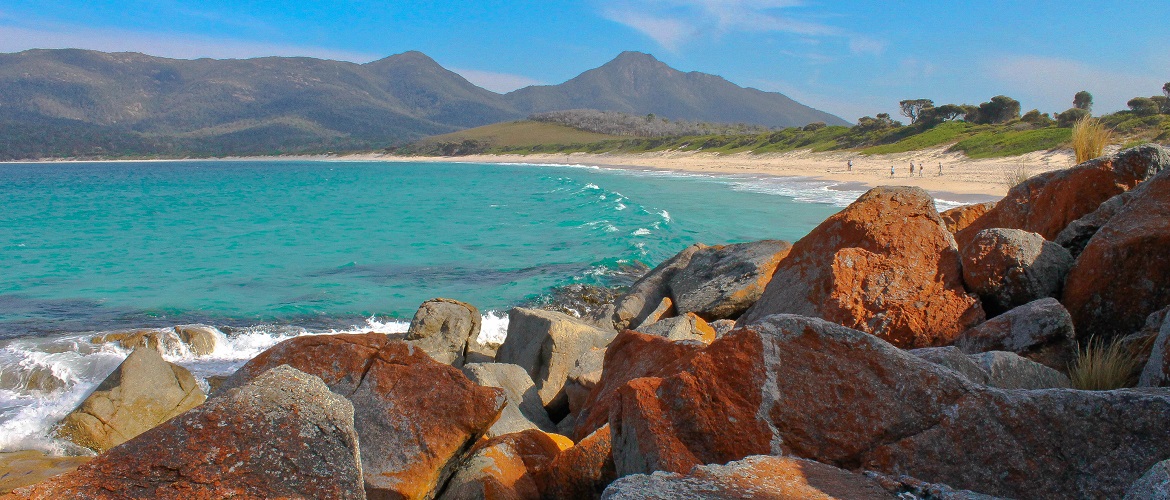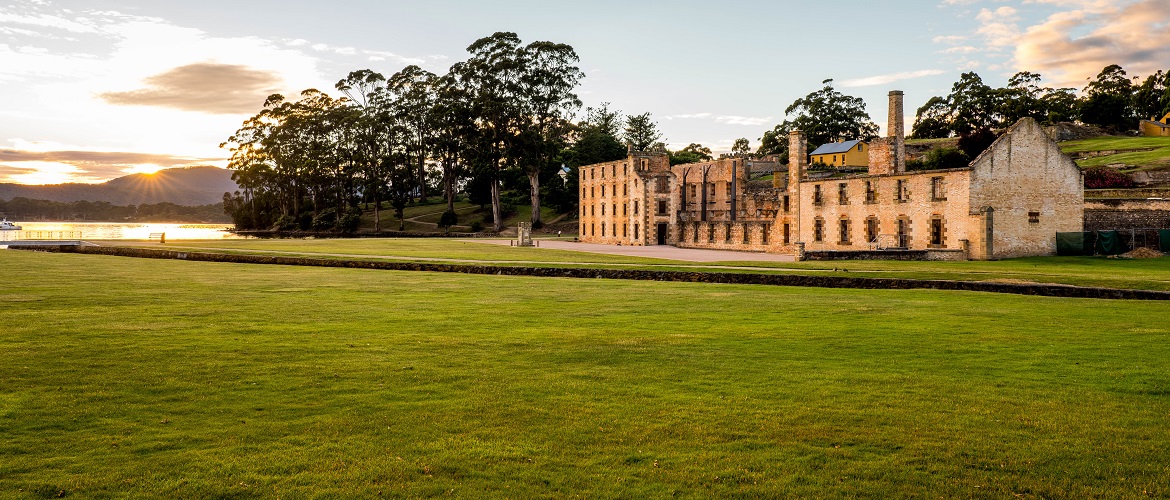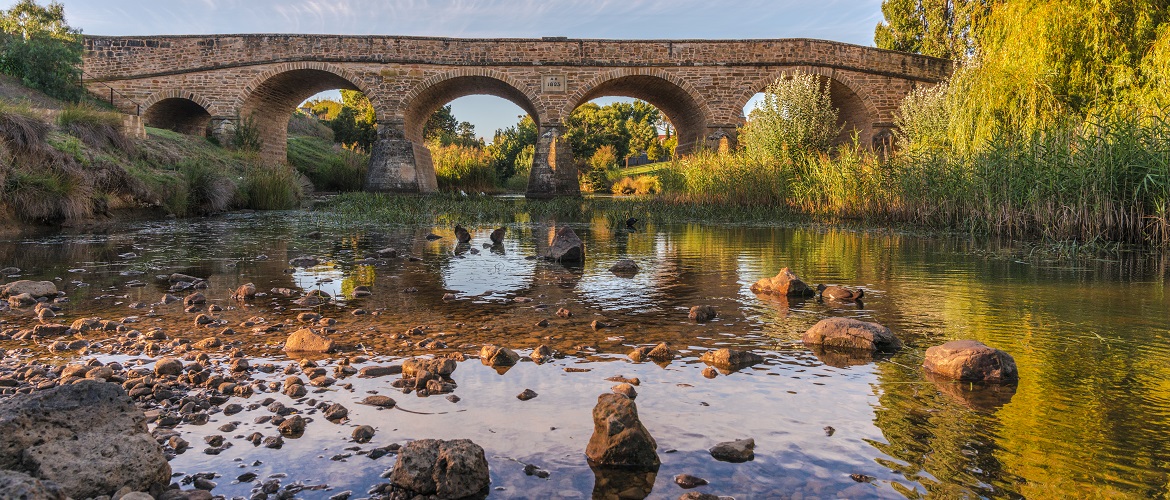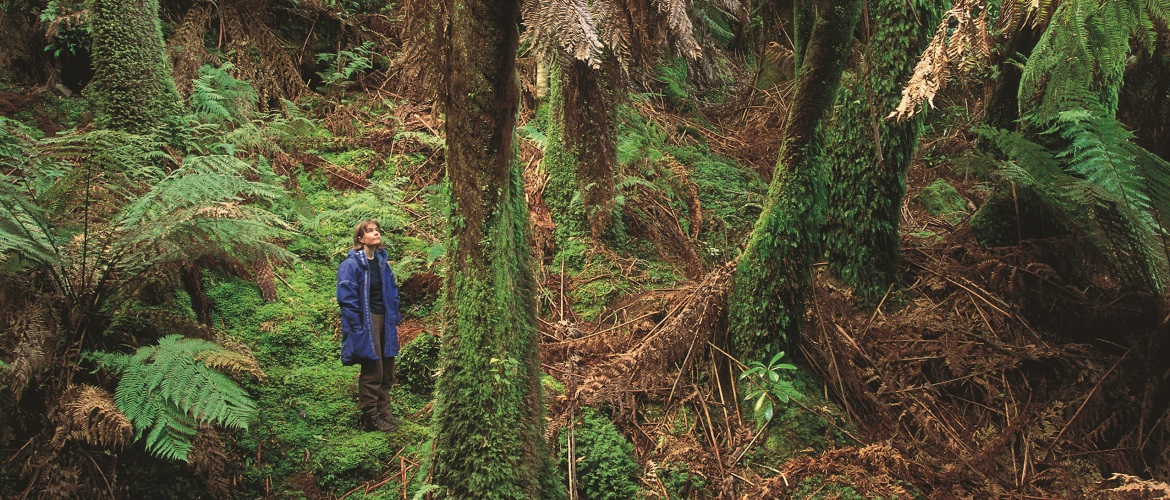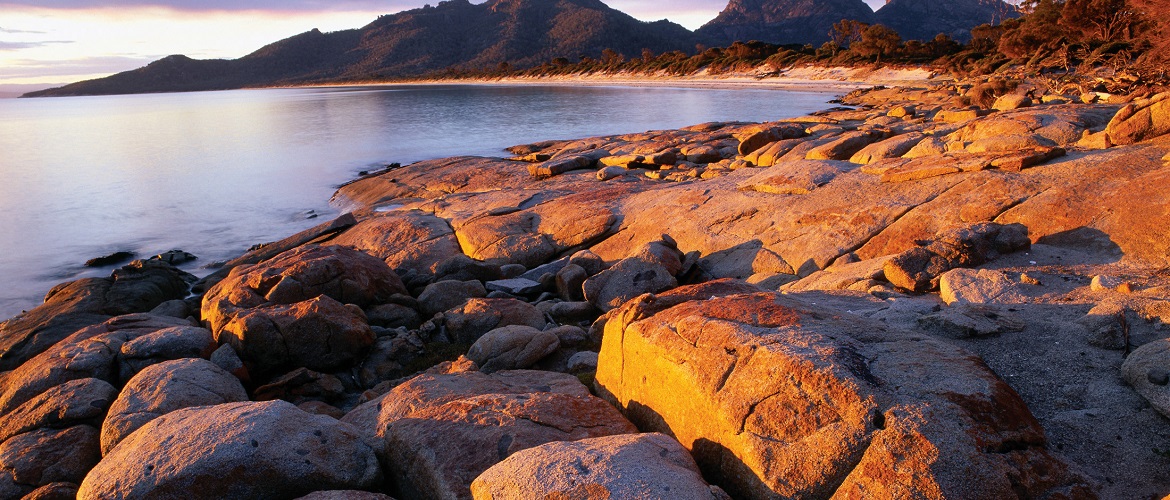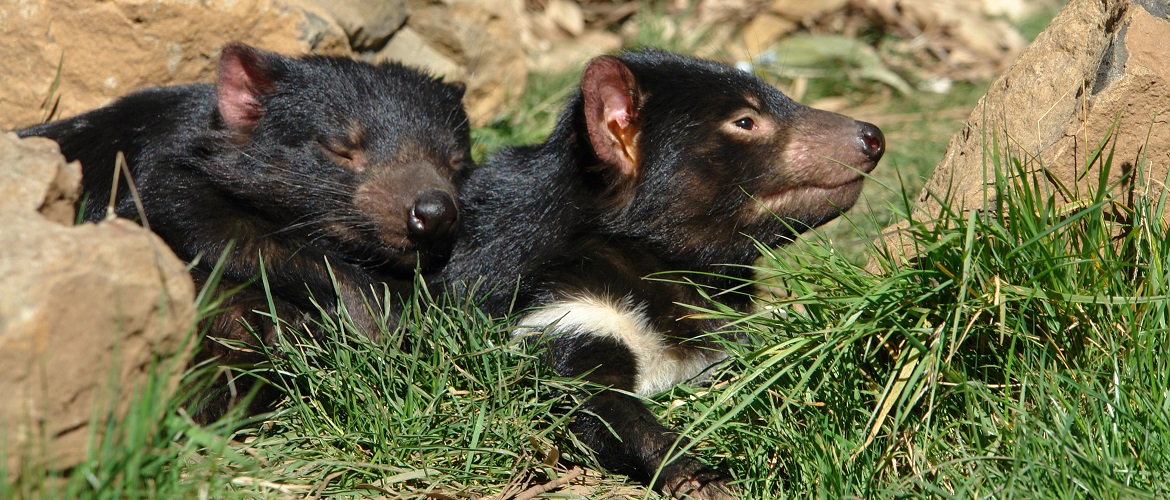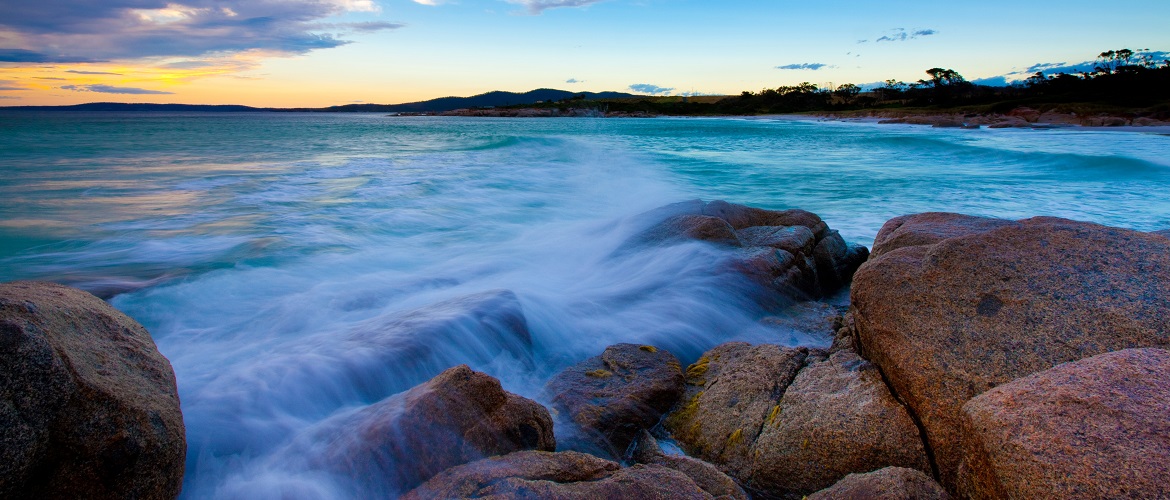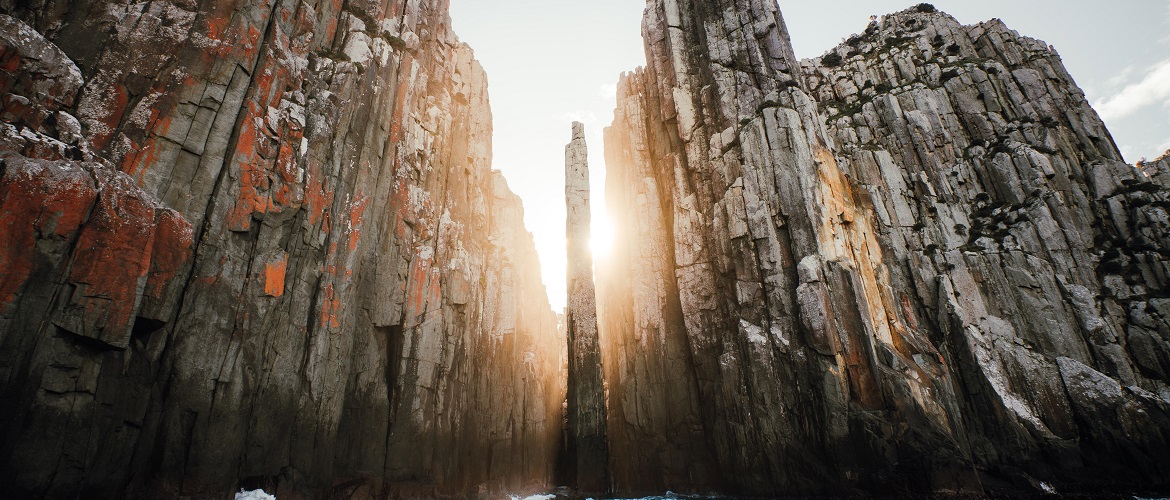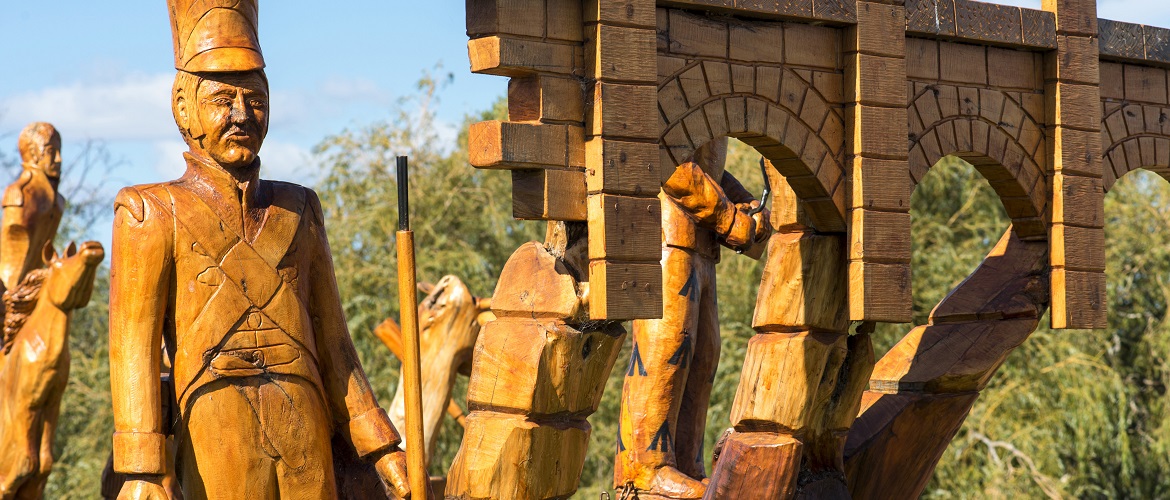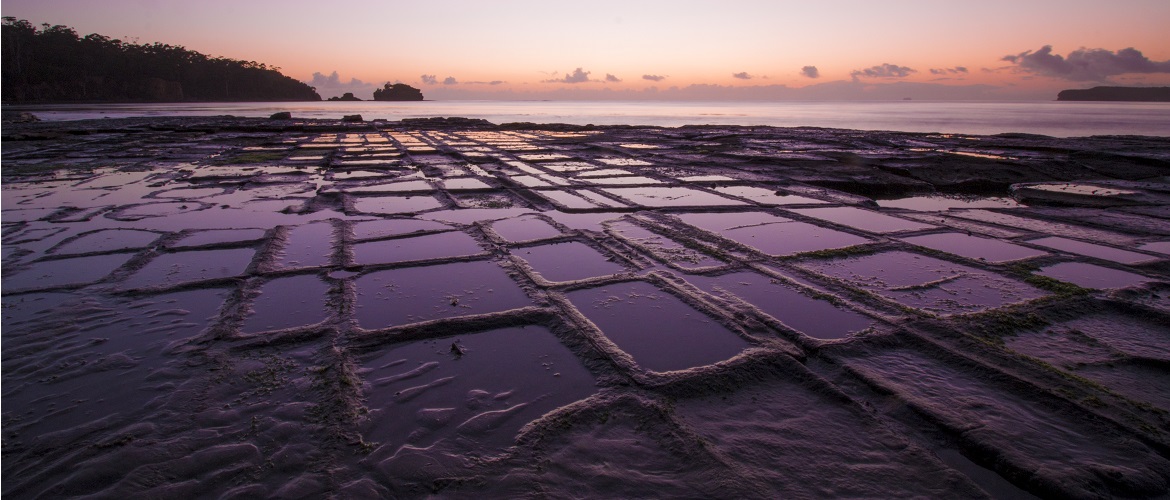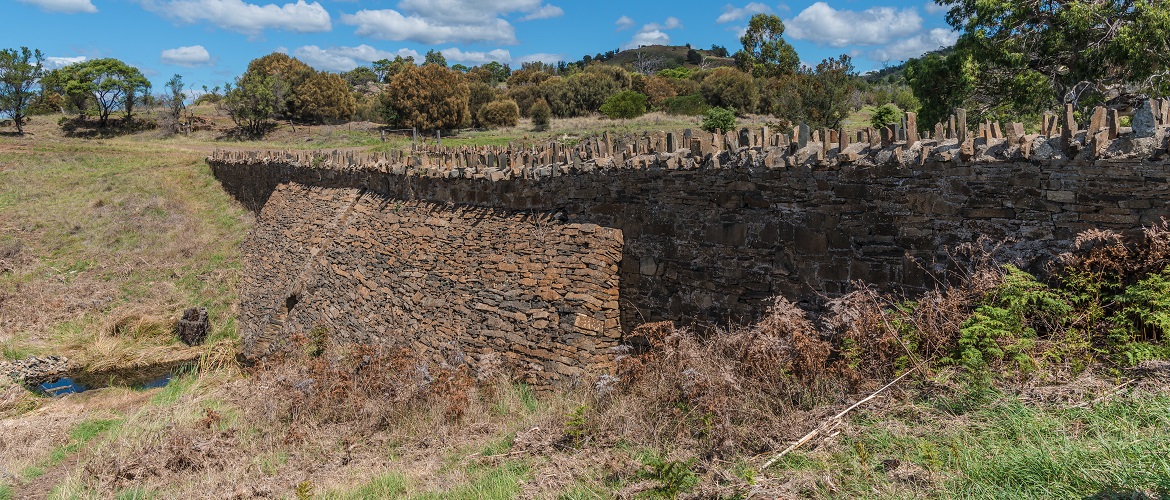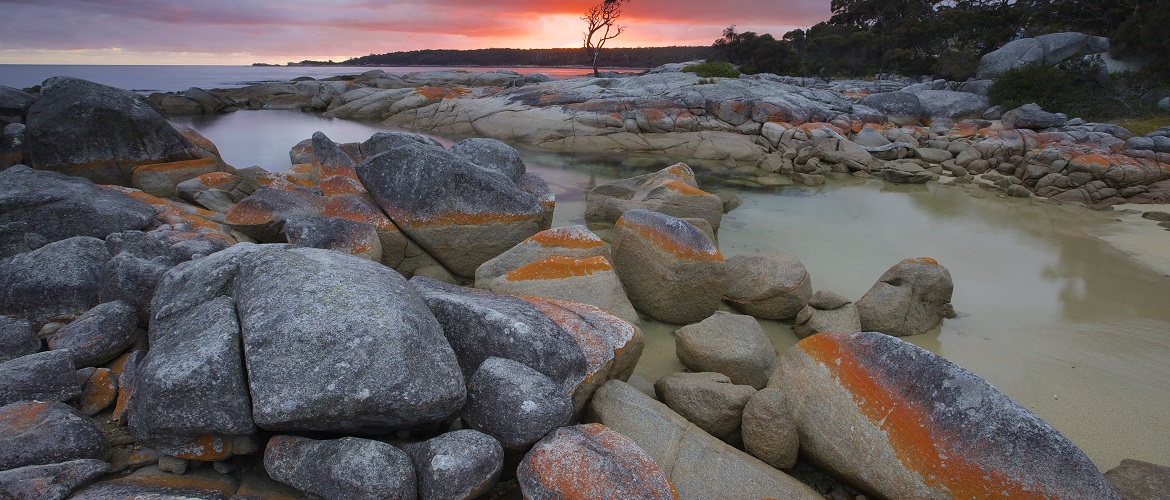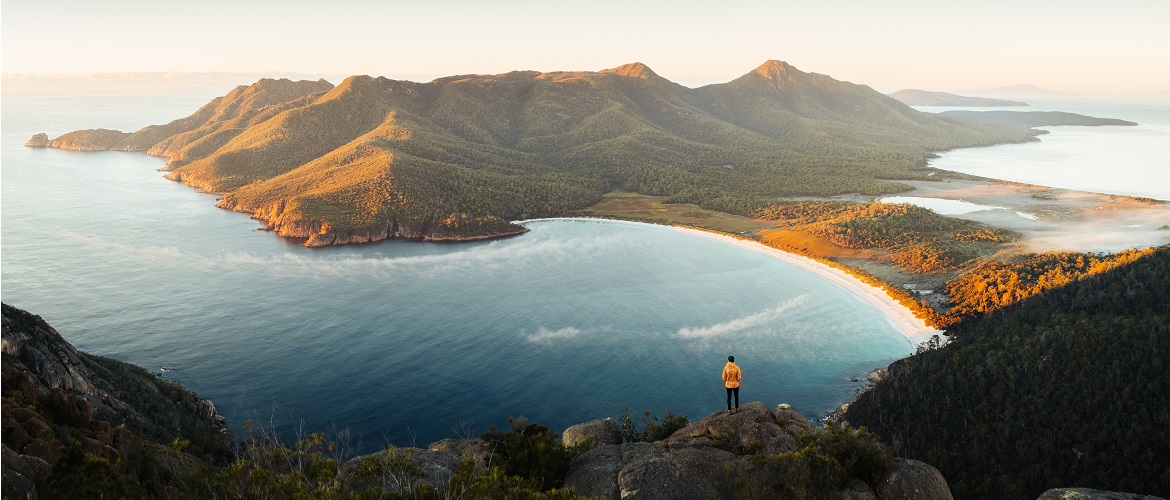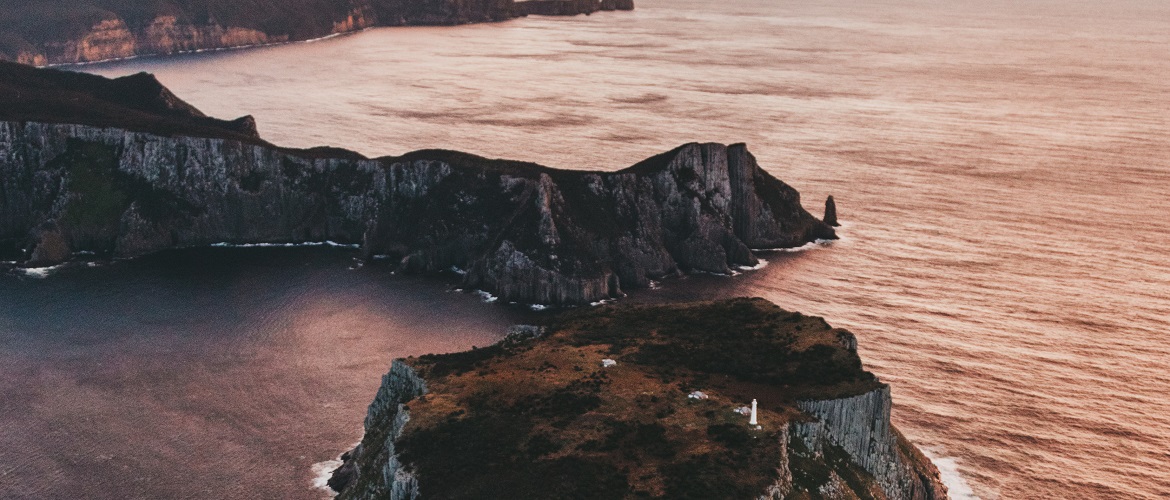Tasmania’s east coast has some of Tasmania’s best weather, rivalling that of many mainland coastal towns. With countless picturesque beaches, bushwalks and picnic spots, the east coast boasts a variety of summer activities all year round. The two prominent towns in the region are St Helens in the north and Bicheno, just north of the Freycinet Peninsula, home to the Hazards and Wineglass Bay.
The North East Trail
The North East Trail on the A3 highway is a winding but amazing landscaped route that takes you along the north east trail, through the towns of Scottsdale and Derby. Along the way some deserving stops include the quaint Lilydale, Lilydale Falls and the Bridestowe Lavender Farm (the largest in the southern hemisphere, best seen in December & January). Call into Legerwood to see wood carvings, situated in parkland in the Main Street. Overlooking the Ringarooma River is the old tin mining town of Derby, famous for its annual Derby River Derby held in October, a fun filled day of river racing, wood chopping competitions and rides for the whole family. Nearby, be sure not to miss Ralph Falls, Tasmania’s tallest single drop waterfall, Cash’s Gorge Lookout, and the Blue Lake – which is a stunning blue colour, an interesting side effect of the area’s mining.
The gateway to many areas in the north east is Scottsdale. The town’s Forest Eco Centre is a unique energy-saving experiment in design displaying Tasmania’s finest timbers, forest ecology and the history of the area. From Scottsdale, head north to Bridport, a seaside town with popular beaches and home of the world renowned Barnbougle and Lost Farm golf courses. In this area is also the Mt William National Park that protects teeming wildlife of the area and is a great setting for fishing, swimming, bird watching and walks.
Travelling to St Marys, you will find the irresistible Mount Elephant Pancakes and the quirky Tasmanian icon, the Pub in the Paddock in Pyengana. A quick detour will take you out to the state’s highest waterfall, St. Columbia Falls and also Halls Falls. Climb the challenging St Patrick’s Head, or the more accessible South Sister Peak, for stunning forest and coastal views. Close by, the Douglas Apsley National Park offers stunning rainforest walks and tranquil pools, deep river gorges, waterfalls and tall eucalyptus trees. Further along the coastal highway, you will find the town of Four Mile Creek, and the Iron House Brewery.
Midlands Turn-Off
An alternative route to the north east is south on the A1, Midlands Highway, and then east from either Conara or Campbell Town. If travelling from Conara on the A4, stop in at the Avoca Billy Bag Shop, a quirky little craft shop, or from the Campbell Town B34 route, head east and take a detour to the beautiful Lake Leake, known for great trout fishing and then if time permits enjoy a walk at Lost Falls.
St Helens is the main town of the north east and an excellent base point for exploring the region. This beautiful seaside town is known for its excellent fishing – in particular the deep sea fishing is extremely popular, with many charters and bait shops offering expert local knowledge. Deserving mention is the idyllic Bay of Fires, extending from Binalong Bay in the south to Eddystone Point in the north. This area is famous for its spectacular lagoons and beaches, great diving and colourful marine life. It boasts numerous awards including the world’s second most beautiful beach by prestigious UK travel magazine ‘Conde Nast Traveller’ and a ‘must see destination’ by Lonely Planet. South of St Helens is the beachside town of Scamander, a local favourite in the summer holidays that offers white sandy beaches, superb fishing, surfing and stunning ocean views. Whilst in the area, visit Eureka Farm for delicious berries, fruits, jams and preserves.
Located at Cornwall are the Heritage Walk and Coalminers’ Heritage Wall, a monument to the miners who hand-tunnelled a coal mine beneath the Mount Nicholas Range.
Bicheno is a major tourism town on the east coast, approximately 2 ½ hours’ drive from both Launceston and Hobart. The town offers great fishing, beautiful beaches and is a well-known access point to the east coast region and Freycinet Peninsula. There are many activities on offer, including kayaking, fishing charters, snorkelling, glass-bottomed boat tours and scuba diving at the Governor Island Marine Reserve. For information on the sea life of Bicheno, visit the Sea Life Centre that has 180˚ views of the beautiful coastline. The incredibly popular Bicheno Penguin Tours depart daily at sunset. The local wildlife park, East Coast Natureworld, is great for the entire family; children in particular love the close interaction with the local wildlife. A visit to the tasting rooms of nearby vineyards is not to be missed. There are many walks in the area, including to Rocking Rock and the blowhole, or Apsley River Water Hole and Gorge walk.
A 30 minute drive south of Bicheno is the entrance to the Freycinet Peninsula. This peninsula is the east coast’s most popular destination and draws many tourists to this famous area each year. Fishing, boating, bushwalking, rock climbing, kayaking and swimming are just some of the activities on offer. One of Tasmania’s most well-known landmarks is the stunning Wineglass Bay, on the peninsula’s eastern side. The bay is only accessible by a steep and adventurous 3km return walk, or by the relaxing cruise along the coast with Wineglass Bay Cruises. Freycinet Air offers scenic flights over the peninsula, to witness the spectacular landscape by air. The Coles Bay jetty is the point for many activities on the peninsula and is the location of the unique and beautiful Hazards with their stunning pink and red granite rock formations.
Just under an hour’s drive from the Freycinet National Park is Swansea, the largest town on the east coast. Swansea is a coastal town that overlooks Great Oyster Bay and the Freycinet Peninsula. Visit the Bark Mill Museum at the Swansea bark Mill Tavern and Bakery and learn about the nineteenth century Australiana and view the fabulous France to Freycinet exhibit. Kate’s Berry Farm is a popular tourist icon of the east coast where you can pick your own berries from November to May, enjoy lunch or a drink at the café and buy Tasmanian wines and produce, including handcrafted chocolates at the onsite gift shop.
Just outside the town is Duncombes Lookout and the interesting convict-built Spiky Bridge. Mayfield Beach is a safe swimming beach for the family, and nearby enjoy a walk to Three Arch Bridge.
Triabunna is a half hours drive south of Swansea, and is a popular stop off point when travelling from Hobart. Stroll through the town and visits its galleries, tearooms, and be sure to stop and have a look at the St Mary’s Anglican Church and Tasmanian Sea Farers Memorial on the waterfront. There are some wonderful walks along the coastal reserves such as the Pelican Walk, which begins near the marina. From Triabunna you can access Maria Island National Park by the Maria Island ferry, which operates on a regular schedule from the Esplanade. Take the 3 hour eco cruise to explore sea caves, waterfalls, sandy beaches, towering mountain ranges, the Limestone Fossil Cliffs and the sandstone Painted Cliffs. Time permitting, spend the day on Maria Island and explore the mountainous island – noted for its historic ruins, rugged cliffs, pristine bays and interesting wild life, being arguably the best place in Australia to view forest birds.
In nearby Orford, take a charming walk at Wielangta Forest and Old Convict Road. Orford has beautiful views of Maria Island and is known for its fishing and beaches, namely Spring Beach, Reuban Beach and East and West Shelley.

